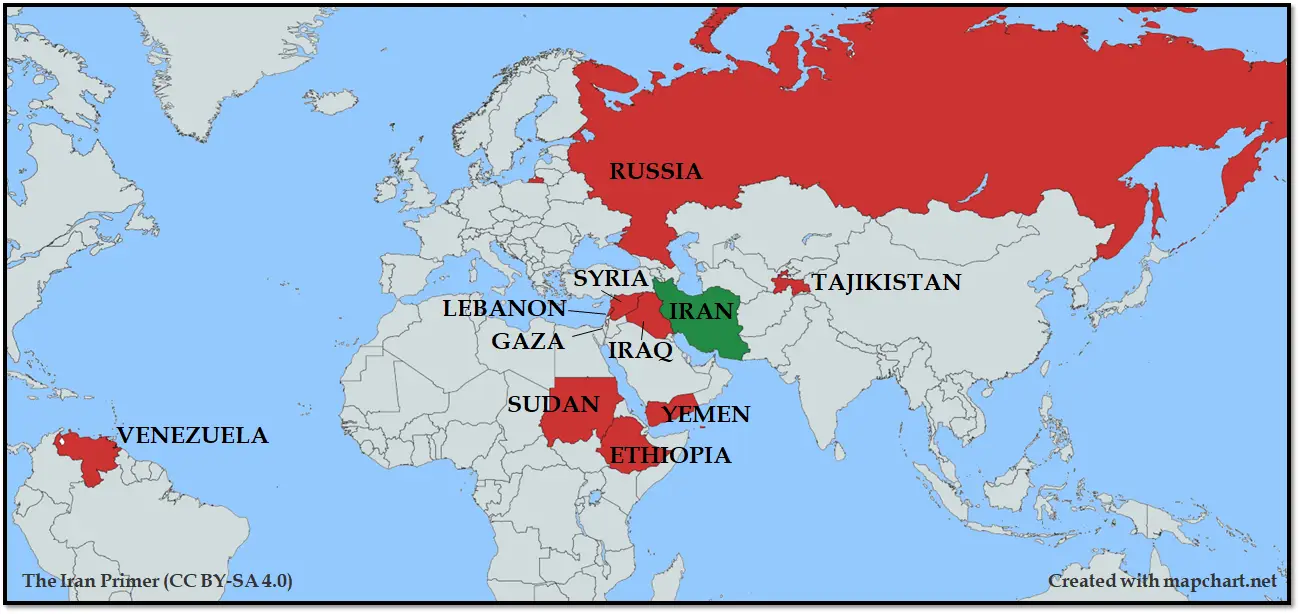iranintl – Amid international concerns about the proliferation of Iranian drones, the Islamic Republic is scaling up, including supplying Sudan and launching drone carriers.
Maritime news website Splash247 reported this week that Iran is readying to launch its first drone carrier, the Shahid Bagheri, a converted boxship — previously called Sarvin — that has undergone modifications to accommodate a large fleet of long-range drones.
Exclusive Planet Labs satellite images obtained by Splash, following an investigation by TankerTrackers.com, revealed how the 3,280 TEU (twenty-foot equivalent unit) boxship delivered from Hyundai Heavy Industries in the year 2000 went through the reconfiguration at a shipyard west of Bandar Abbas in southern Iran.
The Shahid Bagheri, now controlled by Iran’s Revolutionary Guards, has added width to its deck and has around 170 meters (about 558 ft) of runway. It can now accommodate the departure and landing of a very large fleet of fixed-wing drones, adding to merchant shipping’s long list of concerns surrounding the security situation in the Middle East.
“We anticipate Iran’s coming drone carrier will eventually wreak havoc against commercial vessels in the Arabian Sea, somewhere halfway to India,” TankerTrackers CEO Samir Madani told Splash.

Iran’s foray into drone carrier technology comes as the Islamic Republic has been assisting the Houthis in Yemen in their targeting of merchant vessels since November. Around 35 merchant ships have been targeted by dozens of drones and missiles. One car carrier, the Galaxy Leader, was hijacked, along with 25 crew members.
The Iran-backed Houthis say the campaign aim is to force Israel to end its offensive in Gaza, which followed the October 7 invasion of Israel, when Hamas, another Iran-backed militia, killed 1,200 mostly civilians and took hundreds of hostages.
Vice Admiral Brad Cooper, the head of the US Navy’s 5th Fleet, in charge of operations in the Middle East, said, “What I’ll say is Iran is clearly funding, they’re resourcing, they are supplying and they’re providing training. They’re obviously very directly involved. There’s no secret there.”
While the world seems united to bring back security to the Red Sea shipping, with the US leading a large naval coalition there and China calling on Tehran to rein in its Yemeni proxy, the Islamic Republic has been supplying combat drones to Sudan, which has a 700-kilometer Red Sea coastline.
Through supplying Sudan’s army, Iran is taking sides in a nine-month civil war fueled by armed groups keen for Red Sea access that has displaced millions so far and risks further destabilizing the wider region. Iran’s drones can give an edge to the Sudanese military, which has been losing territory to a paramilitary group allegedly backed by the United Arab Emirates (UAE).
Tehran and the Sudanese army re-established diplomatic ties just days after the Hamas attack on Israel after a seven-year hiatus linked to Sudan’s role in a Saudi Arabia-led coalition that fought the Houthis in Yemen.
Iran’s support for Sudan, which involves shipments of Mohajer-6 drones capable of air-to-surface precision-guided attacks, may pit Iran against the UAE, which Sudan’s military, UN experts and Western diplomats say backs the Rapid Support Forces. The rival group is now controlling many of the country’s major cities. In addition to Russia, Iran is also providing Mohajer-6 drones to Ethiopia too.
Arming Sudan would enhance Tehran’s military sway across the broader Middle East where it backs Hamas and Islamic Jihad in Gaza, Lebanon’s Hezbollah, Houthis in Yemen, Kata’ib Hezbollah in Iraq, and Ethiopia’s army as well as dozens of other armed groups.
Despite mounds of evidence on the use of Iran’s drones in current conflicts such as the Russian invasion of Ukraine and the Houthis’ destabilizing of the Red Sea, Iran keeps denying its role with Foreign Minister Hossein Amir-Abdollahian saying this week that it is a “misconception” that Iran has “the remote control over the Houthis, Hezbollah, and Hamas.” The Red Sea blockade came directly from Iran’s Supreme Leader, whose brainchild was to create a network of regional proxies to exert Iranian might.
 Shabtabnews In this dark night, I have lost my way – Arise from a corner, oh you the star of guidance.
Shabtabnews In this dark night, I have lost my way – Arise from a corner, oh you the star of guidance.



